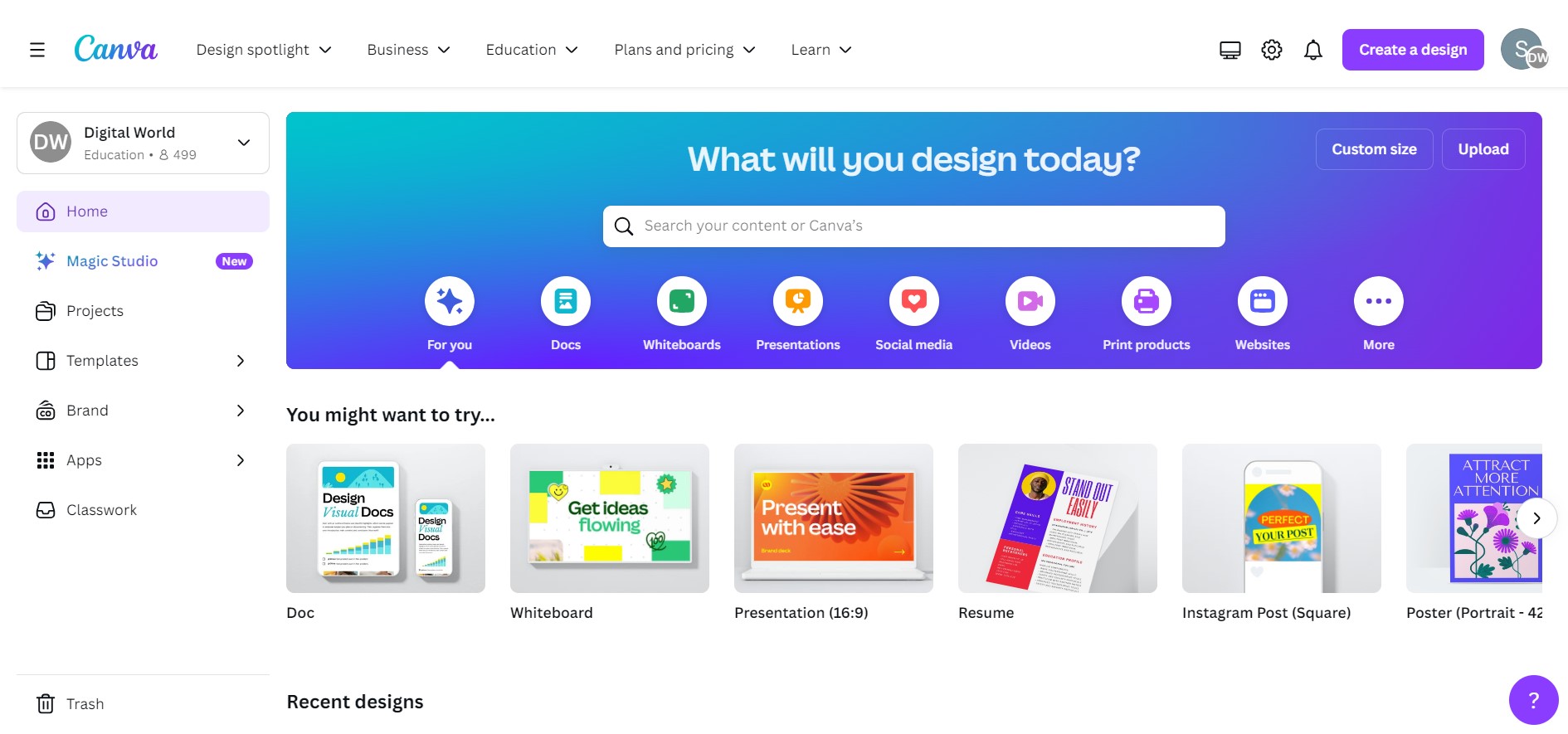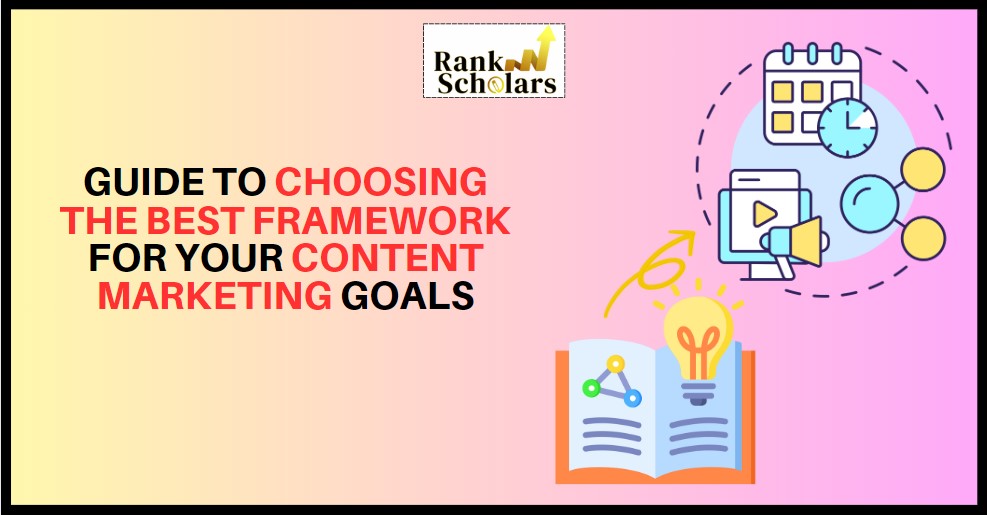Marketing is a very unique and interesting practice, but not everyone can be an expert marketer, especially in this highly competitive world.
Today, content marketing is one of the most popular and appealing types of marketing. By creating high-quality and useful textual articles, visuals, videos, reports, and even podcasts, you can easily attract and engage potential customers and urge them to buy from your business.
If done right, content marketing can help any business generate leads, improve their sales, and, most importantly, save their money/resources at the same time.
The most common problem that most businesses face is transforming the ideas they have for content marketing into an actual strategy/plan.
Following is a comprehensive guide about the different frameworks that can help you achieve your goals without any hassle. So stop stressing out and wasting your resources, and start making your content marketing journey simpler today.
What is a Content Marketing Strategy Framework?
Having a solid content marketing strategy framework is very important. This means you need to know your audience, understand your goals, and select the right content format/channel that aligns most with your business. If you don’t have much experience, you would surely be wondering about the logic behind having a solid framework.
A content marketing framework refers to properly planned and organized strategies that would guide your company through content planning, execution, and measuring results. Framework provides a systematic way for businesses to create and distribute valuable and relevant content to attract and retain their target audiences.
Here are the ten key components that are normally a part of any content marketing strategy framework.
Goals and Objectives
Clear goals must be defined before the execution of any plan or strategy. Businesses should set goals that align with their long-term objectives. One has to decide the purpose of content marketing, whether it is for increasing brand awareness, generating more leads, improving customer engagement, etc.
Target Audience
Research on the audience must also be completed. You must know about the details of the audience segments you are planning on targeting with your content. This can include understanding their needs, behaviors, pain points, and demographical details.
Brand Messaging
Brand messaging must also be established beforehand. This is the message that would convey the values of your brand to your intended audience. Having a brand message ensures that all content created by your team aligns with your identity.
Content Auditing & Analysis
Auditing and analysis are also an important component of a content marketing framework. This involves finding gaps and quality issues in existing content and finding out whether you need to create new content, update it, or paraphrase existing text. A free paraphrasing tool is helpful in this situation. It will paraphrase the text accurately.
Content Creation Plan
On the basis of the audit, the marketing team would plan the project. This would include details of the content that needs to be created, the topics you must cover, and the creation of an editorial calendar.
Content Distribution Channels
Deciding the distribution channels for content is also an important part of the content marketing strategy framework. You need to find the channels where your content would reach your target audience more effectively. These channels can include social media, email newsletters, website blogs, etc.
Promotion Strategies
Promotional strategies refer to deciding the tactics for promoting content so that it can effectively read the intended audiences. This can include search engine optimization, social media marketing, paid advertisement, and influencer partnerships.
Measurement and Refinement
KPIs that would track the performance of new or updated content on different channels are also important components of a marketing framework. Popular metrics mostly included are traffic, leads generated, conversion rate, and user engagement.
Content Optimization
Optimization is also an important process that includes constant improvement and updating of content based on its performance on different channels and the feedback it receives from the audience.
Budget Allocation/Resource Management
Lastly, allocation of resources, including budget, time, and human resources, is also an important part of a content marketing plan.
Why Do You Need to Have a Well-Defined Content Marketing Framework? (Five Popular Reasons)
A content marketing strategy is very important as it acts as a roadmap that guides your content marketing strategy, starting from the planning stage to the final optimization. Here, we have discussed some of the popular reasons why content marketing frameworks have become so important.

Smart and Strategic Planning
First things first, having a solid framework ensures that your content marketing efforts are aligned with the long-term goals and objectives of the business. You can easily prioritize content that contributes to improving your business. Growth can be in terms of increasing sales as well as visibility.
Building Brand Authority
Having a framework also helps you ensure that your voice and message on all content publishing channels are consistent. This approach can help you build the authority of your brand and win their trust and interest.
Efficient Tasks Execution
If you are following a well-structured framework, you will be able to assign and manage your content creation, optimization, updating, and distribution-related tasks in a more effective manner. This helps everyone stay on track and also saves resources for the company.
Improved Growth & Scalability
A marketing framework is always adaptable, and as your business grows, you can take a scalable approach to expand your content creation and marketing efforts. It is important to have a formal framework in place as it would help you enhance content production, diversify your approach, and reach new audiences while retaining your existing position.
Better Team Collaboration
If your business involves multiple stakeholders and the content marketing job has been divided into different groups, it is extremely important to follow a set framework. This would ensure that everyone is aware of the complete plan and remains on the same page. A framework would clarify the roles of different teams, define their responsibilities, and would also plan their workflow. This enhances collaboration in the workplace.
What are Some Popular Content Marketing Frameworks?
One of the best things about marketing frameworks is that you have a huge variety to choose from.
It can be difficult for you to make an independent choice all by yourself, which is why, here in this section, we have mentioned the most popular frameworks for your knowledge.
You can read about these frameworks and choose the one that aligns most with your goals and business objectives.

1. HHH/Pow Push Pull
The first framework on our list is the HHH, also known as the Pow Push Pull framework. This was developed and introduced by Lazar Dzamic, a famous Google alumnus. The main goal of this framework is to create a balance of content divided into three categories: hero, hub, and help.
Here “Help” refers to content such as “how to blogs”, “frequently asked questions”, and content of a relevant nature. Mid-sized companies are suggested to produce and release this type of content once a week as it has the “pull” quality. This means helpful content on landing pages can pull anyone in, no matter what their intent is.
“Hub” content also refers to leadership content often uploaded on landing pages. The aim of this type of content is to “push” a potential visitor to do business with you. This type of content is often intended for customers who are already midway through the sales funnel and should be posted at least twice a month.
Next comes “Hero” content that basically includes customer case studies and creative content. This is at the top of the pyramid, and the intent of this type of content is to simply impress a visitor who has landed on your website, which is why it is also denoted as “pow”. Posting this type of content once a month would be enough.
The HHH/PPP framework ensures that the content you create appeals to different groups visiting your website. This is ideal for marketing teams no matter what stage they need help in, as it can enable them to create different types of content serving different purposes.
2. The Garyvee Content Marketing Framework
Next in line is the Garyvee content marketing framework developed by Gary Vaynerchuk. The framework can help you maximize the use of long-form content. This framework is based on an inverted pyramid.
In this framework, you would be basing your content around the long-form content (pillar content). This content serves as the source for creating small pieces of content, also known as (micro-content).
This involves the creation of long-form content at regular intervals and dividing it into small parts. Lastly, you have to distribute and promote the content on social media channels.
This is one of the most powerful frameworks because it helps you get maximum exposure to every piece of content that you create. This strategy is quite similar to the content cluster model.
Note that this marketing framework is ideal for companies that have teams capable of creating large volumes of content during regular intervals. To execute this strategy framework, you need to have a detailed content calendar and multiple writers having expertise in creating different content types for different channels.
3. The Hedgehog Concept
The hedgehog concept is another popular framework that you can easily execute if you are familiar with Jim Collins “Good to Great”. This framework is based on the idea that you need to find the one skill you are good at and put all of your focus on it.
Wondering how this framework would apply to your content marketing plans?
Well, first, you have to analyze and understand what you or your team is good at. If you guys are good at producing quality content, it is important to focus on it and leave the promotional aspects to another party (you can hire a third party like Rank Scholars for the job). Similarly, if you are good with promotions and lack writing skills, you should consider hiring expert writers.
You can also further categorize it and focus on the topics that you are comfortable writing about. If you like writing on certain topics or have expertise in a specific niche, you can easily engage a certain set of audiences.
4. The TOFU-MOFU-BOFU Framework
Sales and marketing results are often described using a funnel. The funnel shows the journey of a buyer. As a buyer progresses toward a purchase decision, the funnel becomes narrow, and the number of people gets smaller.
For example, if 500 people come to your website (top of the funnel), 100 of them become leads (middle), and 10 make a purchase (bottom). This is what a sales funnel looks like in the business world.
When it comes to content marketing, you must know that buyers who enter different stages in the funnel would be looking for different kinds of content. The TOFU-MOFU-BOFU framework focuses on producing and distributing content for different stages of the buyer’s journey. The purpose of all these contents is to move the buyer forward toward making a purchase decision.
TOFU: The top-of-the-funnel content includes business blogs, social media posts, infographics, and other types of content whose main purpose is to attract the intended audience to the business (website).
MOFU: The middle of the funnel is the stage in which the audience is interested in reading more about the business and your offerings. Case studies, eBooks, listicles, and guides are all important types of content that you need to create for people who are interested in your business (leads).
BOFU: The bottom of the funnel is the stage in which customers have to make a final decision. Here, you have to provide them with content like detailed product reviews, client testimonials, success stories, etc. This content should help customers make decisions.
5. The Smart Content Framework (Good Rebels)
The SMART content framework is yet another popular marketing plan you can implement to achieve your desired goals. This framework is based on a seven-step plan, which is more philosophical and requires a lot of effort compared to other strategies.
The SMART content framework is popular because it can give you a clear overview of what content marketing is and also ensures that you are not forgetting important stages.
Here are the seven phases of this framework:
- Phase 1: First, define your objectives and business goals.
- Phase 2: Identify who your target audience is.
- Phase 3: Define your brand’s ethical values.
- Phase 4: Choose the right platforms for content creation & distribution.
- Phase 5: Define KPIs and your progress measurement plans.
- Phase 6: Develop your media and outreach strategies.
- Phase 7: Adapt your existing workflows to the framework.
This framework is perfect for businesses that are early in their content marketing journey. The stages, such as defining ethical values and defining performance indicators, make this plan very much realistic.
This marketing strategy framework is ideal for all those who are looking for a comprehensive plan.
6. They Ask, You Answer Framework
They Ask, You Answer is yet another popular framework that was developed by Marcus Sheridan. He developed the plan after he saved his company from failing during the Great Recession. This framework is quite simple and based on the simple principle that if the customer asks a question, he should be able to find the answer on the company’s website.
In this framework, you need to focus on creating content that answers the common queries of the target audience. There are five major topics that one needs to cover thoroughly on the website. These include:
- Price: You need to write on topics or clearly write content that explains the cost of every product or service you sell. You need to cover all major pricing factors.
- Listicles (Bests): Next, you have to write listicle articles. You have to give your customers a list of the top options that they might consider buying from your site.
- Reviews: Write down expert review articles that describe the types of products that you directly sell or the ones that you don’t directly sell but are related to your niche.
- Problems: You have to understand the pain points of your customers and write content that addresses their problems and offers them solutions.
- Comparisons: Create comparison articles with competitor products so that your customers can know why yours are better and can make an informed decision.
All of these types of content are important and can work as a foundation of your content marketing strategies. These types of content can build trust, build strong connections with the audience, and, most importantly, help you generate more leads and sales.
7. Orbit Media’s Content Strategy Framework
The frameworks that we have already discussed in this post are intended for both B2B and B2C, but the Orbit Media strategy is designed specifically with B2B users in mind. This content marketing framework focuses on the creation of content, such as “how-to guides” that can offer valuable solutions to customers.
Specific sales page content, off-site articles, influencer collaboration, and visual content creation (ads) are all important parts of this strategy. This framework is not ideal for small businesses. It is developed for large-sized organizations.
To implement this framework, you would need the skills and resources to create influential content.
How Can I Combine Popular Frameworks into My Content Marketing Strategy?
You can also combine multiple frameworks and create your own original strategy that works best for your business. There is no limitation or restriction, and you can pick and choose different elements/components from different frameworks.
However, when you are combining popular frameworks or choosing the best one to set your content marketing approach, it is important to consider some factors.

3 Main Factors to Guide Your Thought Process
Here, we have mentioned the factors which would guide you through the process:
1. Business Goals : Before selecting a framework or combining multiple strategies, it is very important that you first ask yourself what you want your content to achieve. Your goals would help you select the most ideal framework.
2. Content: You also have to consider the type of content you already have and your expertise related to what type of content you can create and how frequently. You can choose the framework that aligns best with the content type you’re comfortable working with.
3. Time: Lastly, you also need to consider the time factor. Ask yourself how fast you need to see the results and choose the framework that promises the quickest results.
Examples of How You Can Transform the Commonly Used AIDA Model and Implement HHH Framework!
First, let us summarize the AIDA model, which is the most popular one used by content marketers and strategists.
- Attention: the customer becomes aware of your products or services.
- Interest: the customer starts getting interested in your business.
- Desire: the customer wants to own/buy your product.
- Action: the customer makes a purchase from your business.
According to this model, your content marketing approach must include creating informative content for the audience. It should ignite interest in the minds of potential customers and urge them to buy your products.
If you are relying on this model but not getting substantial results, you can implement the HHH framework. This is how it would be implemented:
- Help: This is the bedrock of your content that appeals to customers at all stages of the AIDA model.
- Hub: This content targets those in the ‘I’ and ‘D’ stages who are already progressing deeper into the funnel.
- Hero: This is the content that grabs the attention of new customers. This is the hardest thing for your content to do, which is why you need to make sure that it is interesting for the readers.
Common Mistakes to Avoid When Creating a Content Marketing Framework!
Here are some of the common mistakes that you need to avoid when you are creating or implementing a content marketing framework:
1.Lack of Clear Goals
Without setting measurable goals, you can never create or follow a content marketing framework. By setting clear goals, you would be able to avoid putting your resources into creating or distributing content that doesn’t have much value.
2.Neglecting Your Audience
The purpose of creating and implementing a content marketing framework is to satisfy the search intent of your target audience and turn them into loyal customers. If you are not focusing on creating content for your audience, you won’t be able to get the desired results.
3.Not Conducting Content Audit
Before finalizing a content marketing framework, it is very important to do a proper content audit. This tells you what kind of content has already been created and would also identify any gaps you need to fix in your existing material. Without an audit, you might end up creating duplicate content that would have no value for the audience.
4.Not Analyzing Competitors
As a marketer or business manager, it is important that you keep an eye on what your competitors are up to. If you know what kind of content marketing frameworks they are using, you can easily learn from their success and failures. Moreover, by doing a detailed competitor analysis, you would be able to create content on topics that they haven’t covered yet.
5.Focusing on Quantity, Not Quality
When it comes to content marketing, quality is of the utmost importance. If you are just focusing on developing content capital, you must know that it is not going to be valuable to your intended audience. It is important to ensure that your existing and new content is both original and error-free.
Some Important Tools that Can Help You with Content Marketing Frameworks!
To create and implement a content marketing framework smoothly, it is important that you use modern tools and digital solutions instead of relying on traditional methods. Here are some tools that you would find helpful.
1. Trello
Trello is a very powerful and popular task management tool that allows you to categorize different tasks and assign them to different people through customizable dashboards. Content marketing projects are usually stretched over months, and by using a management tool, you can easily manage tasks and deadlines, allocate budget, outline steps/strategies, designate team members, improve open communication, and get a lot of help in automating administrative tasks.

Google Analytics
In content marketing, you have to focus on audits and analyzing your progress. Google Analytics is a tool that can provide you with detailed insights about the content on your site as well as that of your competitors. You can find out the flow of traffic on certain posts, the behavior of your audience, content performance, engagement, and other metrics that would help you decide whether you need to update your content.

Ahref
Search engine optimization is a very important part of content marketing. To enhance the reach of your content, you need to use keywords that are commonly searched for by your intended audience. Ahref can help you with the keyword research stage and suggest the most competitive and top-searched KWs for your content. This all-in-one tool can also help you get a complete analysis of your link profile.

Chat GPT
Content creation is an important part of this whole process, and Open AI’s Chat GPT has the ability to create fresh content on your desired topic within less than seconds. If you don’t have much experience in research and writing, you can leverage this tool to create fresh drafts. However, it is important to humanize and remove plagiarism from AI-generated text before you use it on your website.

Canva
As we have discussed earlier, content marketing is not only about textual content. You have to focus on creating visuals, animations, and graphics that can make your content appealing. Canva offers an AI art generator tool that can assist you in creating original and attractive graphics and images that would complement your website or online store.

Final Words
A well-designed content marketing framework is important for all sorts of businesses. This is because these formal plans can help you capture an audience, generate more leads, increase engagement, and convert the audience into customers.
In this article, we have discussed in detail what a content marketing framework is, why it is important to have one, and the most popular frameworks in local and international markets. In addition to this, we have also discussed some of the tools that can help you with the process.
It is important for you to know that content marketing is not an easy job as it requires proper planning, constant effort, and a lot of your time. If you don’t have much experience in this regard, it is best to hire professional experts like Rank Scholars. You can get help from their team, as they have tons of expertise in understanding content marketing requirements, suggesting the best strategies, and ensuring their successful implementation and follow-up!
Afrasiab Ahmad writes SEO articles for online business marketers and SEO tools users to make their Google rankings surge. He graduated in English Literature. He contributes articles about digital marketing, SEO techniques, and tech regularly.



